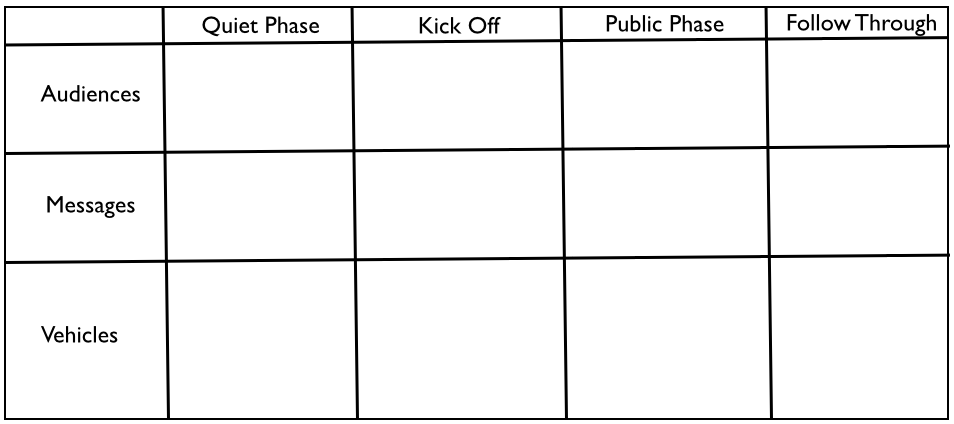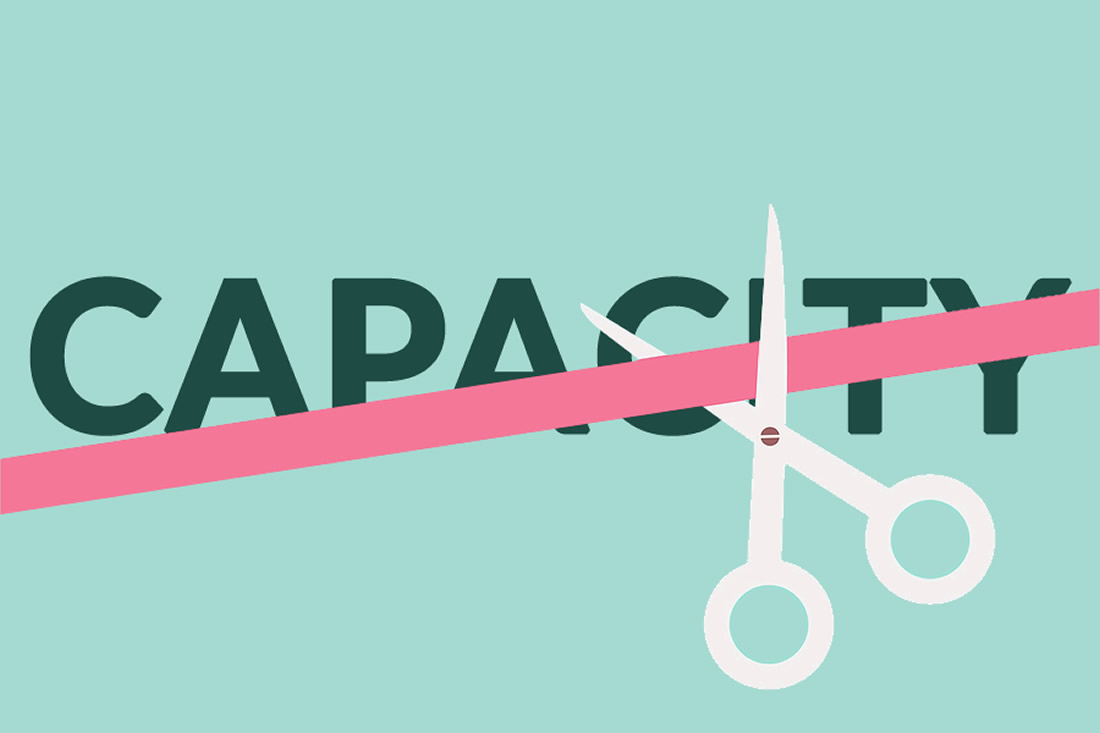How to Create Your Capital Campaign Communications Plan

In the past, we’ve explained why it’s so important to have a plan that lays out the communications strategy for your whole capital campaign.
Now you’re going to learn how to put the plan together. To make it even easier, we’ve included a sample plan at the end. Take it, customize it for your needs, and — like magic — you’ll be ready to go!
The 6 All-Important Questions for Your Campaign Communications Plan
Start by answering these six questions:
1. Your Goals: What do you want to accomplish with your campaign communications?
Of course you want your communications to support your fundraising goal. But what else?
A well planned and executed communications campaign can help put a nonprofit on the map and expand your visibility throughout your community. You’ll strengthen your image with the people who already know you; and you’ll also introduce yourselves to the people who should.
2. Cost: What’s your campaign communications budget?
First, decide what you want to do. Then, figure out how much that will cost. Finally, include those costs in the overall campaign goal.
3. Audience: Who are your audiences for each phase of the campaign?
During your campaign you need to send the right messages, to the right people, at the right time. The messages you use for your “internal audiences” (your board, for example) need to be very different than the ones you use for the public at large.
With that in mind, identify your campaign’s audiences before you create your communications pieces!
4. Messaging: What messages will work for each audience during each phase of your campaign?
Your campaign will have several phases. Each phase requires a distinct approach, as will the different audiences you’ll be reaching out to during each phase.
5. Media: What combination of on and offline media will you need to reach your audiences?
As you figure out what you want to say to each audience segment, you’ll also want to consider how you’re going to reach them. When will you use email, newsletters, snail mail, social media, tv spots, videos, website, or other materials?
6. Look & Feel: How will you ‘package’ your message?
Once you have a sense of your audiences, messages and media, you’ll work with a design firm to create the “look and feel” of your capital campaign. You’ll want a special campaign logo, for example, to create your campaign’s distinct “brand.”
Campaign Communications and the Phases of Your Campaign
You might be wondering about how the phases of your campaign tie in to your communications plan. Here’s a nifty chart to use that’ll help you get it all straight.

Quiet Phase
During the quiet phase you’ll be communicating with people who are already close to your organization (your staff, board, advisory board, major donors, and lead-gift prospects). These are people who know your work well, so don’t bore them with the 101 stuff!
Instead, your message to this group is all about your case for support and what you’ll be able to accomplish with the funds you campaign is going to raise. In addition, be sure to create communications that make these very special, key people feel special — like an insiders’ campaign report just for them.
Campaign Announcement
Your campaign announcement kicks off your public phase. This message is about your capital campaign’s success to date and the funds yet to be raised. But while you’ll still be in touch with your core supporters, you will also be reaching out to a broader audience, including people who might be getting their first “look” at you because of this campaign.
Public Phase
The public phase is the time when your communications will blossom. At this point you’ll be using every venue — press releases, your website, your social media channels — to reinforce your vision and case for the capital campaign. At the same time, you’ll focus on building excitement as you approach your campaign’s goal.
Celebration and Follow Up
Your campaign communications will continue for some time after the campaign itself is over. This is the time not only to send a press release announcing your achievement, but also to hold an event where you thank everyone who made that achievement possible.
In addition, don’t forget a plan for reminding donors of their pledges!
Your Capital Campaign Communications Plan
To help you get started on creating your communications plan, we’ve drawn up a simple outline below. These are the “bones” of the plan.
- Communications Goals
- Communications Calendar & Budget
- Audiences and Messaging – Internal, External
- Communications Vehicles for Each Audience
- Brand and Design — Logo, Website, Stationery, and other Material.
- Create Communications Strategies, Messages and Materials for Each Phase of the Campaign
Start at the beginning and gradually develop the material for each segment. By the time you’re done, you’ll probably have a campaign communications notebook with a tabbed section for each topic. A great plan, created early, is going to make your life much simpler throughout the campaign.
If you’d like more templates to use throughout your capital campaign, you can join Capital Campaign Pro Essentials and access everything you’ll need for your campaign.
Free Campaign Checklist & Guide
Download our free capital campaign checklist and guide to learn exactly what’s required for each campaign phase.
This article was adapted from Andrea Kihlstedt’s best-selling book, Capital Campaigns: Strategies That Work.



Leave a Comment